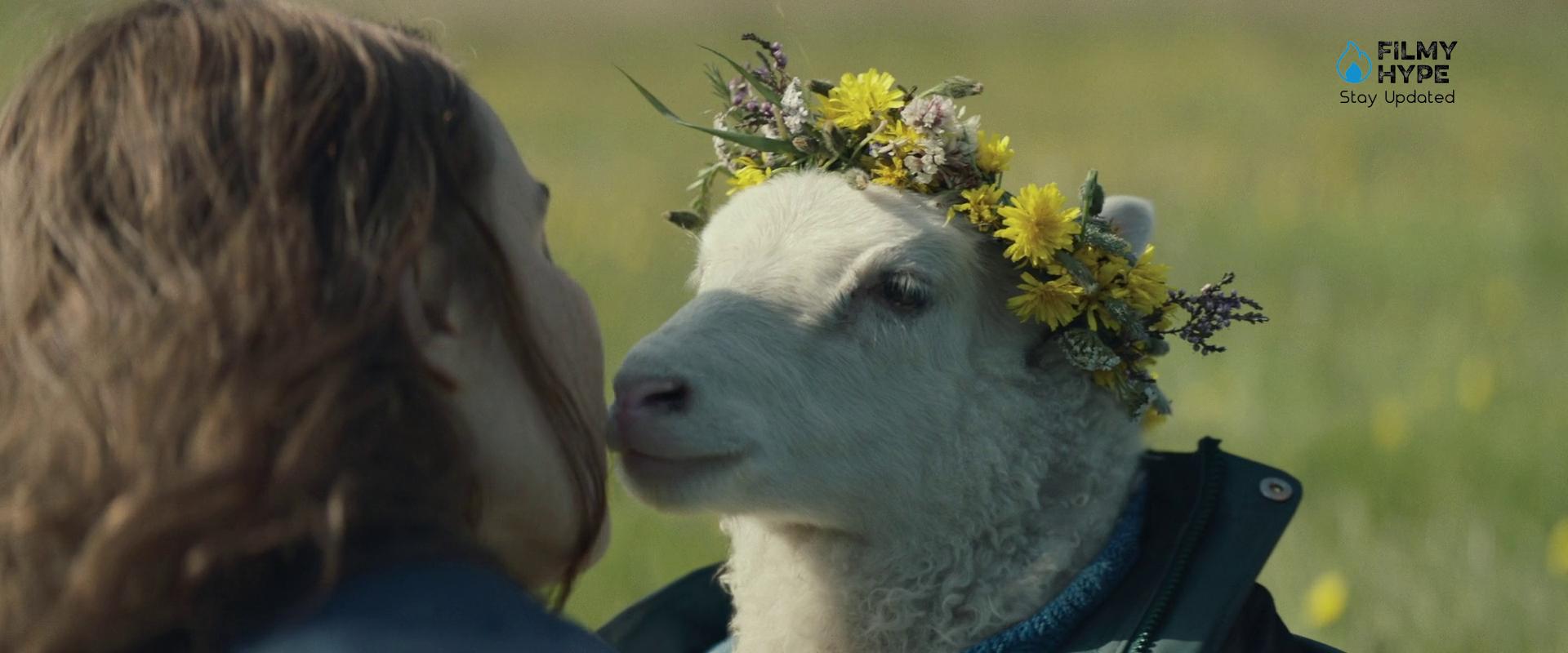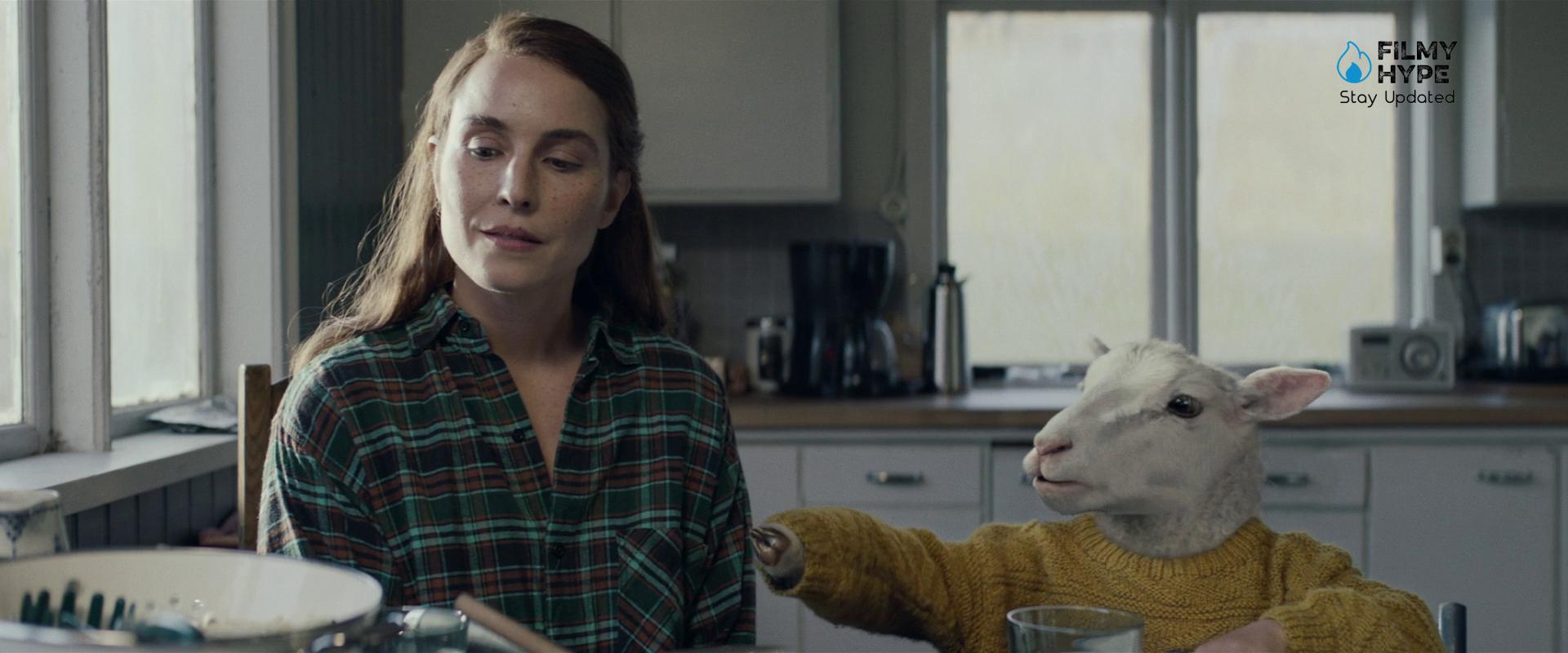Lamb Movie Ending Explained: Who Is Really Ada’s Father? Ending and Explanation of The Film
Lamb Movie Ending Explained: A film about the pain of loss, about parenting or about the ancestral and complicated relationship between man and nature? Lamb is the surreal debut of Valdimar Jóhannsson, the Icelandic director who wrote his debut (from an idea that dates back to 2009) with the writer and poet Sjón, the lyricist of Björk.

Produced by Hrönn Kristinsdóttir and Sara Nassim with the executive production of Noomi Rapace and Béla Tarr and presented in Un Certain Regard at the Cannes Film Festival 2021, where it received a curious “Originality Award” conceived especially for the occasion, Lamb is divided into three chapters and was shot on a real farm in Kirkjubæjarklaustur in southern Iceland. Presented as a horror art house but described by its author as “a classic story but with a strange element”, the film has caused discussion since the launch of the trailer and the first screenings for the finale and its meaning: let’s find out why.
Lamb Movie: The Plot
A supernatural force, something dark and inscrutable, shows up one night on the farm of María (Noomi Rapace) and Ingvar (Hilmir Snær Guðnason). It does not last long, the time to leave their pasture in dismay. María and Ingvar are two sheep farmers. They live in the rugged and picturesque Icelandic countryside with a dog, a cat and their many sheep. But their relationship is cracked by a devastating loss that has left them unable to overcome deep pain.
During the birth season and the famous réttir, the sorting of animals, a pregnant sheep gives birth to an unusual lamb: half animal and half human. María and Ingvar experience that mysterious birth as a miracle, the possibility of returning to being happy: it is a second chance and it does not matter that perhaps it is an abomination.

The couple adopts the lamb, they call her Ada, treat her as if she were a normal child and protect her from the mother who claims her. The visit of Pétur (Björn Hlynur Haraldsson), the brother of Ingvar, a former rock star, slacker, a bit harassing and now in a crisis of identity, questions their newfound balance. But there is another threat coming, even more looming.
Lamb Movie Ending Explained: Who is Really Ada’s Father?
Initially disgusted and disturbed by his brother and his wife’s bond with their “daughter”, Pétur establishes an unexpected and heartfelt bond with Ada and becomes her uncle. But after an alcoholic evening with the family, the heavy and unwanted sexual advances towards María cost him dearly: the sister-in-law accompanies him to the bus stop and sends him back home to prevent him from ruining everything.
In the meantime, Ada and Ingvar went to fix the tractor that Pétur had left stranded. Someone, however, stole the house rifle and killed the dog. Ingvar is soon acquainted with him: he is the biological father of Ada, a creepy man-sheep who shoots Ingvar in the neck before taking Ada with him and heading off into the wilderness.
Upon her return, María discovers that her husband and Ada have disappeared. She goes in search of the two and discovers Ingvar’s body just before he dies. The dream of a newfound family is over. There is nothing left for María to do but wander into the stormy beauty of the Icelandic border world and close her tear-filled eyes to the notes of Georg Friedrich Händel ‘s Sarabande.
Lamb ‘s ending is open to multiple interpretations: it is an allegory of what it means to be a parent, of the emptiness of loss and of the cold and isolated landscape, of the emotional abysses of a couple bent by mourning. Jóhannsson himself changed his mind several times after reviewing the film several times. In the director’s notes he describes his work as “a visual poem about a painful loss for which you would be willing to do anything to restore the joy and happiness you had before”.
Not only that: Lamb is also an essay on the symbolic clash between nature and culture, instinct and reason, masculine and feminine , even between feminine and feminine, because “nature is not only what we see but also what we feel and, therefore, is closely connected with the supernatural “.
“Nature cannot be predicted or controlled and we humans are quite fragile, weak and dependent, as we experienced in 2020. We are always subject to forces beyond our control.
Lamb is a story based on Icelandic folklore and folk tales, but “not one in particular” by admission of Jóhannsson himself. There is no specific reference to the figure of a “human-sheep” or such a zoomorphic figure in Scandinavian folklore. The director explains in an interview with Film Hounds that “somehow I feel that no one can be wrong because I left everything open and I really want the audience to get what they think of it , because I think it’s boring if I just explain what I had. in mind”.
I made this film because I really wanted to do a job that I wanted to see, and I succeeded. But I also wanted to do it for the viewers, so they could be part of it without having to explain everything to them. I am confident that everyone can give their own interpretation of the film.
A significant story is that of Dimma-limma-limm: the fable that Ingvar reads to Ada to put her to sleep. It is Iceland’s best-loved children’s story, written in 1921 (during a trip to Italy) by artist, illustrator, actor and singer Guðmundur Thorsteinsson, better known as Muggur. It is a fairy tale that Muggur dedicated to his niece Helga, daughter of his sister Guðrún who had moved to Liguria, in Pegli.
Dimmalimm is a princess who becomes attached to the swans that swim in the pond of her realm: she feeds them and communicates with them. Among the swans there is one very particular: it is actually a prince that an evil witch has transformed into that animal with a wicked spell. Thanks to her love, Dimmalimm manages to break the spell: the two become king and queen and “lived happily ever after”.
Jóhannsson knows folklore well as well as lambs, sheep and rams: when he was little, he spent a lot of time raising his grandparents, ranchers and parents of five children all born within eight years. Over the years, the director has put together suggestions, photos of landscapes and drawings (including that of the hybrid creature half human and half lamb) in a “log book” which, together with a collection of poems by Sjón, served as a basis for the script.
Ada’s idea itself has distant origins: the figure of the child with the typical antlers of the Icelandic sheep appeared to Jóhannsson in a dream and is present in an old dream diary that the director’s mother still preserves. An elusive and imaginative “very provocative” idea: there are those who consider Ada a tender and adorable creature and those who consider a disgusting aberration of nature.

Noomi Rapace specifies in an interview with the Los Angeles Times that Ada does not have a definite origin in Icelandic folklore, but rather is about the stories about the “dark forces” surrounding Christmas . An example above all is that of Grýla , the witch who terrifies children during the holidays. This Mountain Troll comes to Yule village to track down the naughty children who have misbehaved throughout the year. No coal for troublemakers: Grýla prefers to cook the bad guys in her pot and feed them to her husband Leppalúði, their 13 children and her black cat Jólakötturinn.
Inside Ada there is also something “Christic”: people read what they want in her and coming into contact with it reveals who they really are, it gives oxygen to the body and soul. Ada is also impermanent: she represents an “awakening”, a “moral center” to which it is worth holding on to overcome a stalemate and be reborn. This is why Jóhannsson wanted to leave the interpretation of the finale open to the viewer. The director thinks that “everyone should decide for himself” and put what he wants into this story.
Who is Ada’s biological father (Jóhannsson calls him “ram man”) and where does he take his daughter? The creature can represent many things: nature, karma, the pursuit of justice. It is the fury that falls upon humans who exploit the earth out of greed. Rapace explains it thus.
“The two protagonists take something that doesn’t belong to them. Ada is not them. In practice, they kidnap her and María shoots her mother! I think you know that happiness is a short chapter, which is a borrowed time. This is why she doesn’t chase Ada: she knows that she somehow sought her out.
Just like Ada, the terrible “ram man” “appeared” to Jóhannsson in a dream: one morning he woke up to the memory of huge rams devouring polar bears. When the Swedish actress and director shot the finale, they still hadn’t decided what would happen. “I ran up that hill… and then we took several shots and filming,” Rapace reveals.
For me, life is always wonderful. Our willpower and our determination to get up and move on is so strong and I think in a weird way, there is hope in the finale. A painful hope.
With Lamb ‘s ending “a new chapter opens up in María’s life” because she is finally free: “when Ada is gone and Ingvar dies in her arms, she still manages to find the courage to know that life will continue. There is a decision to survive and to live. “Basically, Rapace concludes, “the beauty of us humans are that we have the extraordinary ability to heal” but only when “we allow ourselves to feel the pain”. If at the beginning of the film María’s life is blocked, in the end “it is completely open and it will be the beginning of something new”.






